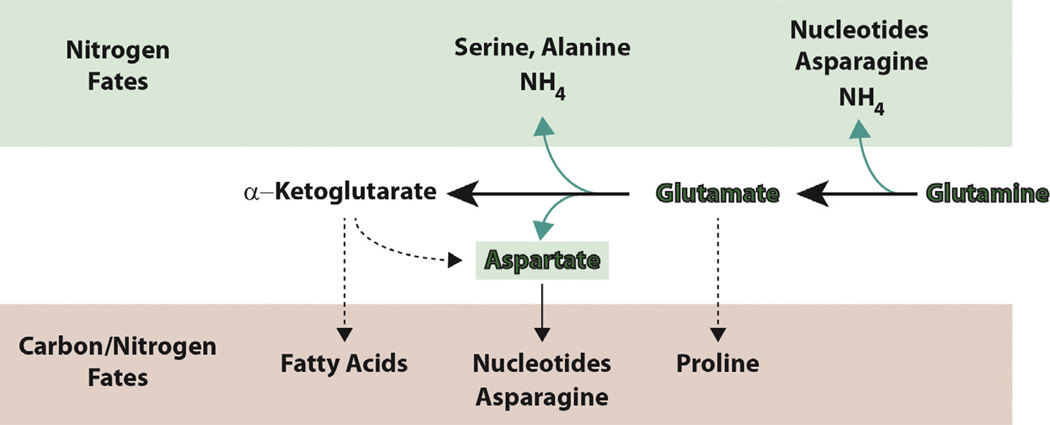Fig. 4.
Major fates of glutamine. Glutamine and its major metabolite, glutamate, are used as nitrogen donors to contribute to the production of amino acids, via transamination reactions, or to nucleotide biosynthesis (green box). The amino groups of glutamine and glutamate can also be hydrolyzed to form ammonia, thereby balancing nitrogen assimilation and release. Glutamate and alpha-ketoglutarate produced by these deamination reactions can be further utilized for biosynthesis (pink box). Glutamate can be converted to proline or, via the TCA cycle, to aspartate, which is incorporated en masse in nucleotide biosynthesis or converted to asparagine. Alpha-ketoglutarate can be metabolized via various routes to acetyl CoA for use in de novo fatty acid biosynthesis.

